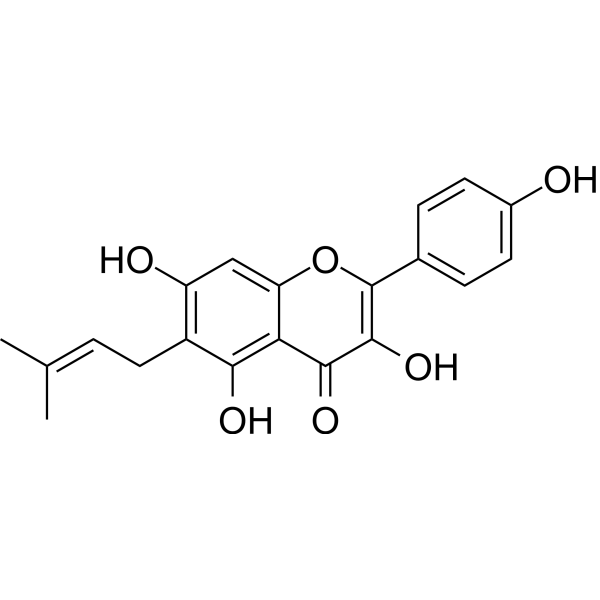
Licoflavonol
CAS No. 60197-60-6
Licoflavonol( —— )
Catalog No. M31521 CAS No. 60197-60-6
Licoflavonol is a novel natural inhibitor of Salmonella T3SS, could be a promising candidate for novel type of anti-virulence drugs, it exhibits a strong inhibitory effect on the secretion of the SPI-1 effector proteins via regulating the transcription of the SicA/InvF genes, and the transportation of the effector protein SipC.
Purity : >98% (HPLC)
 COA
COA
 Datasheet
Datasheet
 HNMR
HNMR
 HPLC
HPLC
 MSDS
MSDS
 Handing Instructions
Handing Instructions
| Size | Price / USD | Stock | Quantity |
| 5MG | 582 | In Stock |


|
| 50MG | Get Quote | In Stock |


|
| 100MG | Get Quote | In Stock |


|
Biological Information
-
Product NameLicoflavonol
-
NoteResearch use only, not for human use.
-
Brief DescriptionLicoflavonol is a novel natural inhibitor of Salmonella T3SS, could be a promising candidate for novel type of anti-virulence drugs, it exhibits a strong inhibitory effect on the secretion of the SPI-1 effector proteins via regulating the transcription of the SicA/InvF genes, and the transportation of the effector protein SipC.
-
DescriptionLicoflavonol is a novel natural inhibitor of Salmonella T3SS, could be a promising candidate for novel type of anti-virulence drugs, it exhibits a strong inhibitory effect on the secretion of the SPI-1 effector proteins via regulating the transcription of the SicA/InvF genes, and the transportation of the effector protein SipC.
-
In Vitro——
-
In Vivo——
-
Synonyms——
-
PathwayOthers
-
TargetOther Targets
-
Recptor——
-
Research Area——
-
Indication——
Chemical Information
-
CAS Number60197-60-6
-
Formula Weight354.35
-
Molecular FormulaC20H18O6
-
Purity>98% (HPLC)
-
Solubility——
-
SMILES——
-
Chemical Name——
Shipping & Storage Information
-
Storage(-20℃)
-
ShippingWith Ice Pack
-
Stability≥ 2 years
Reference
molnova catalog



related products
-
Farnesyl Acetate (mi...
Farnesyl Acetate is a flavouring compound identified in foods such as blueberries.
-
AIDS031406
AIDS031406 is a natural product Psychotria ipecacuanha.
-
α-Defensin-1, human
α-Defensin-1, human



 Cart
Cart
 sales@molnova.com
sales@molnova.com


